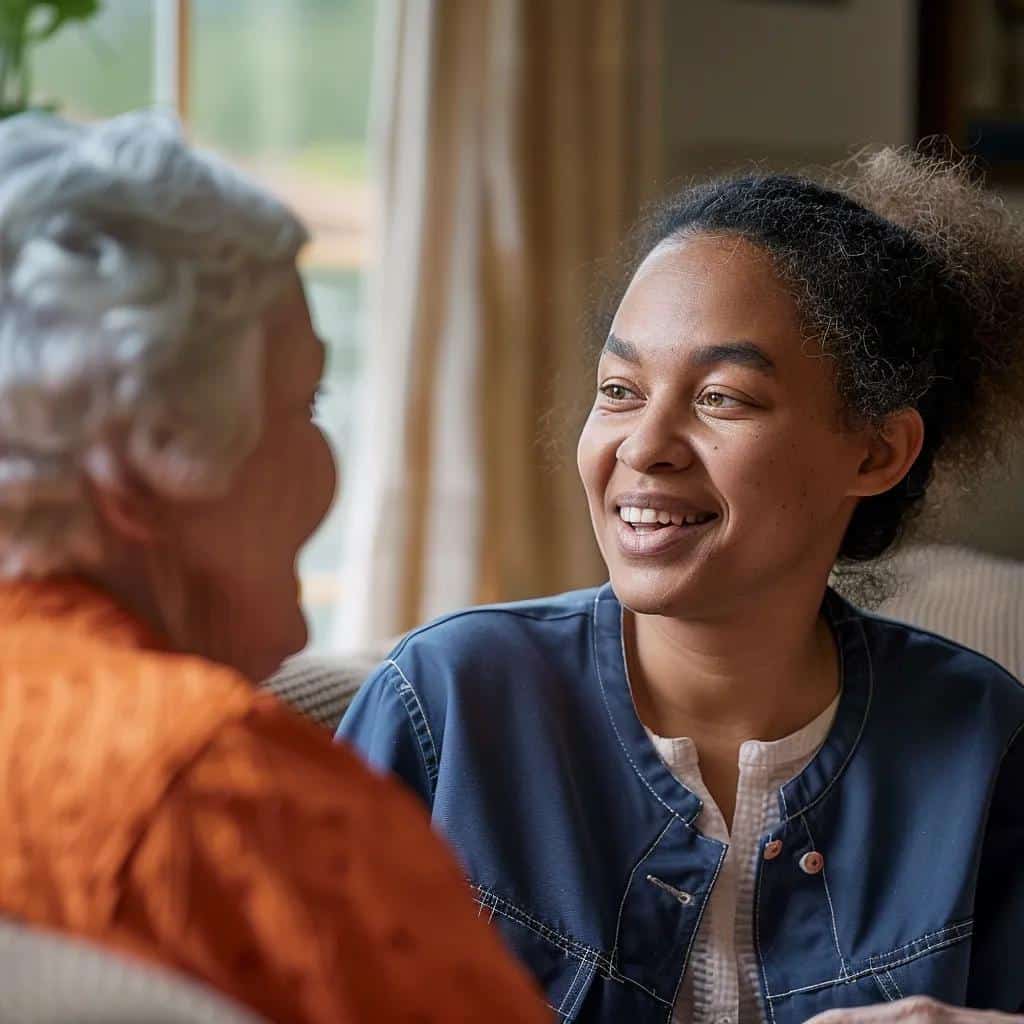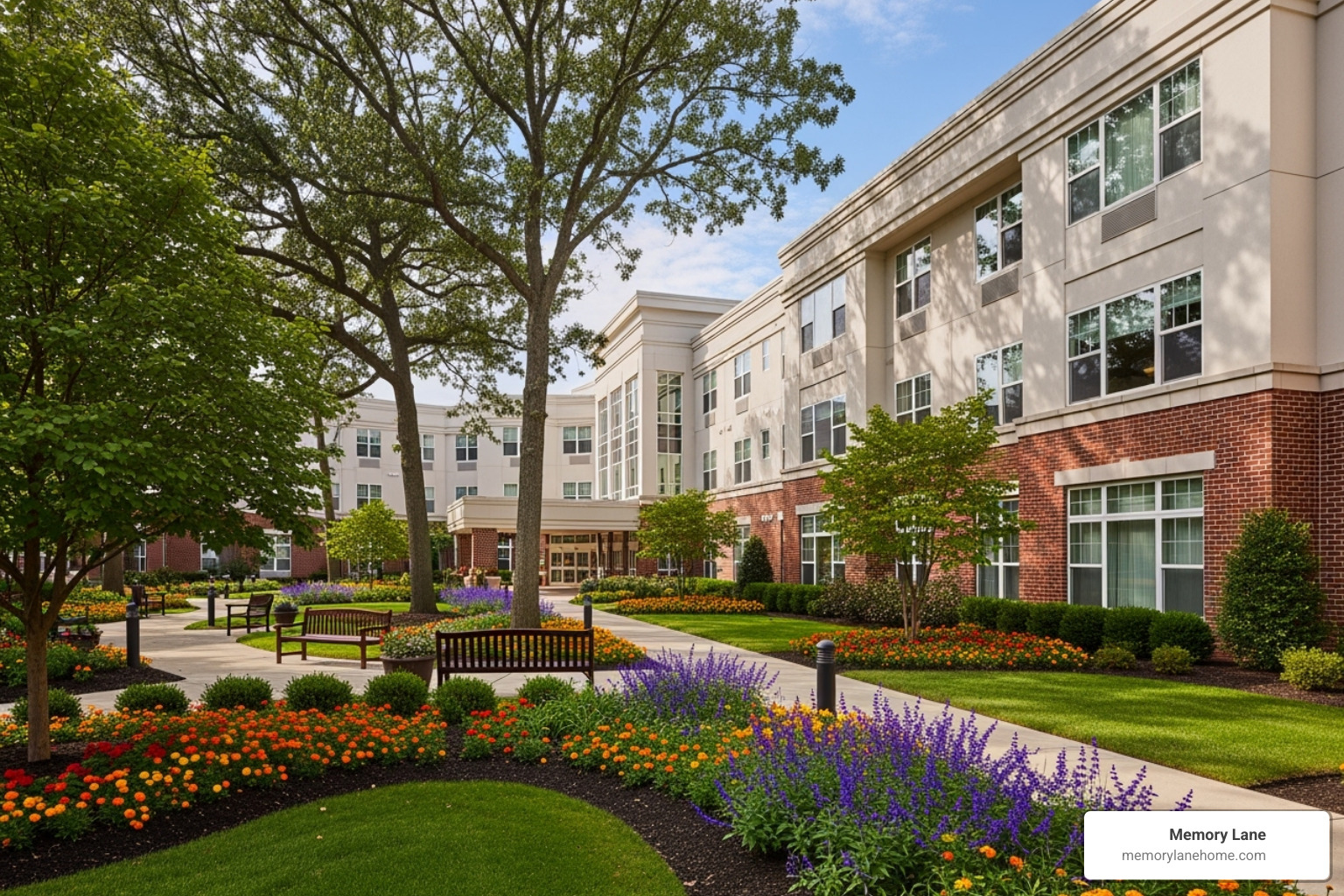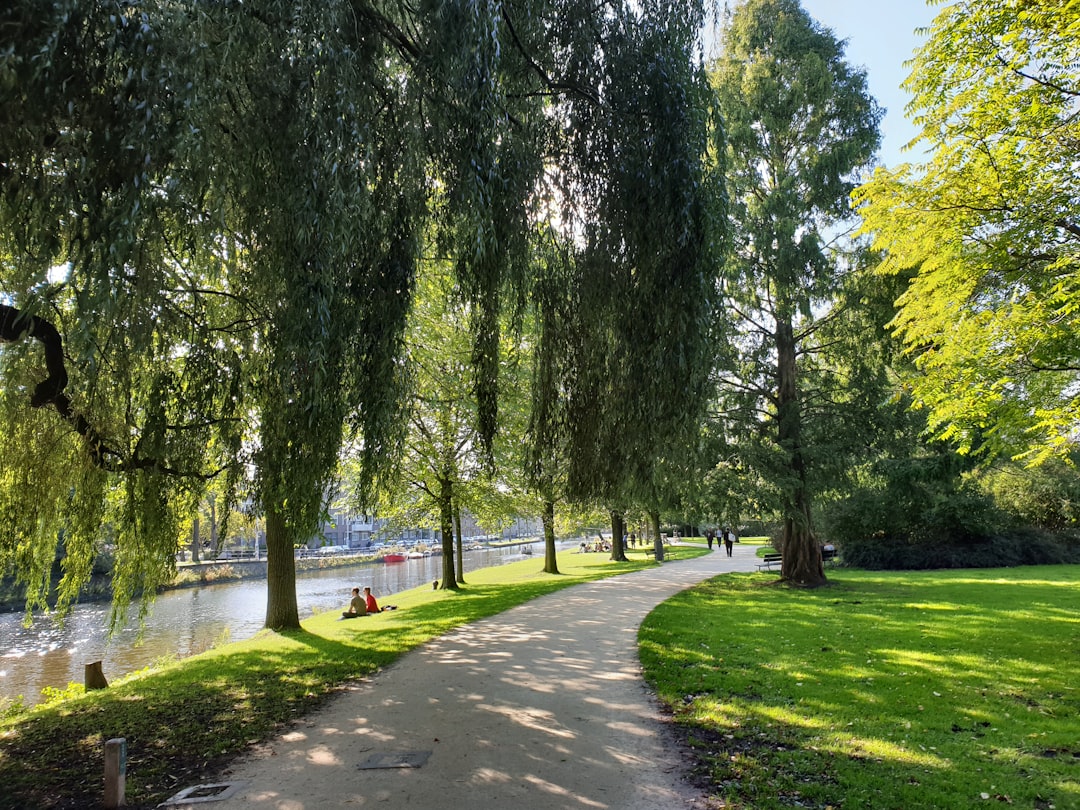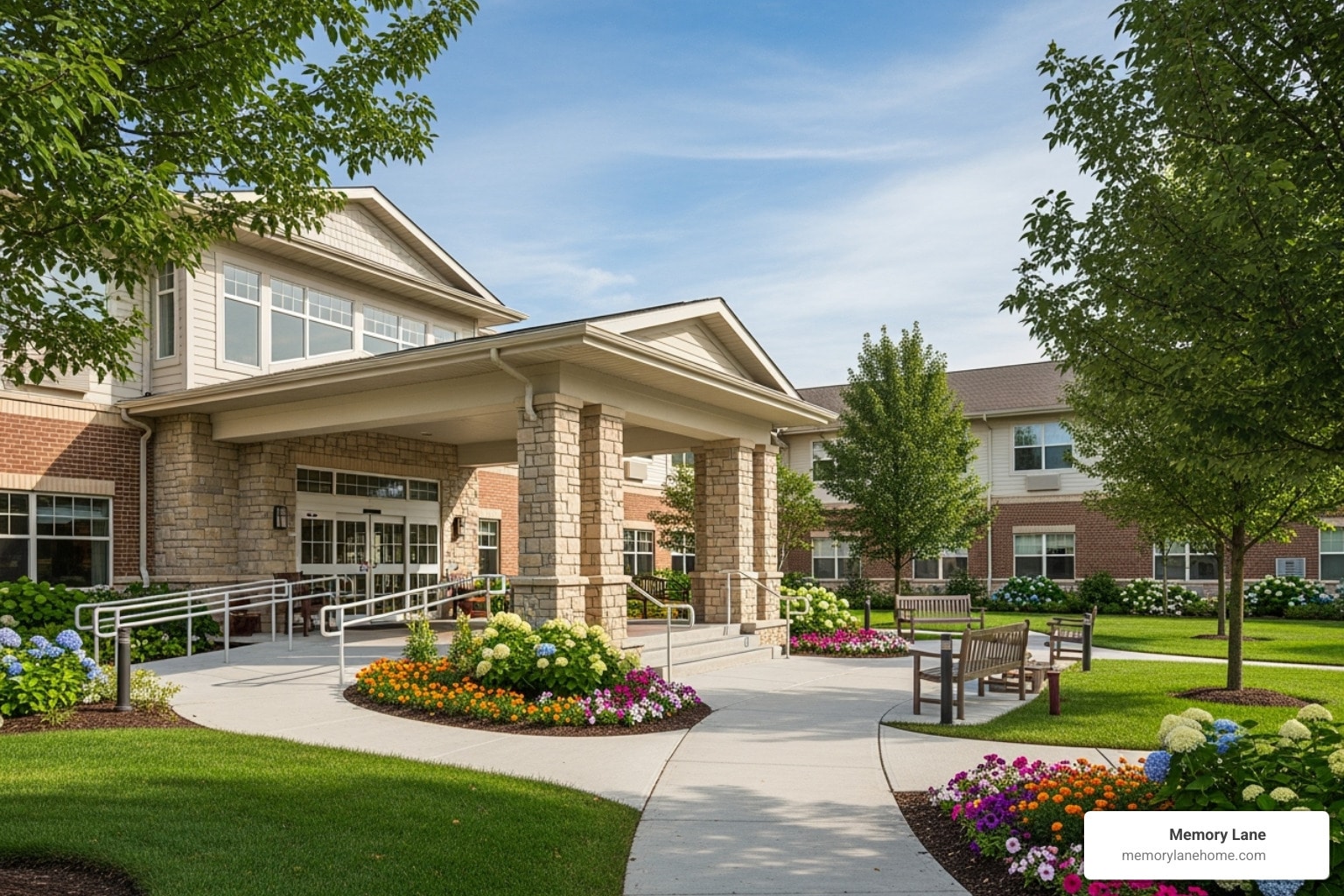Find your perfect Ypsilanti senior housing. Explore assisted living, memory care, and affordable options with our comprehensive guide.

Memory Care Facilities in My Area: Memory Lane vs. Tradition
Memory Care Facilities in My Area: Memory Lane vs. Tradition

Memory Lane Home Care vs. Traditional Assisted Living: Choosing the Best Memory Care Facilities in My Area

Choosing the right memory care facility in your area directly shapes a loved one’s safety, comfort, and quality of life. For families seeking compassionate dementia support, understanding the differences between Memory Lane Home Care’s personalized ranch-style homes and conventional assisted living settings can end confusion and reduce stress. This guide compares core service features—care levels, environment, staffing ratios, costs, and daily engagement—while highlighting why Memory Lane’s high caregiver-to-resident ratio and familiar surroundings foster cognitive well-being. By the end, you will know how to evaluate care options, leverage local Ypsilanti and Ann Arbor resources, and confidently plan your family’s next steps.
Memory Lane vs. Assisted Living: Top Memory Care Near You
Memory Lane Home Care’s memory-focused residential services differ from assisted living in how support is delivered, where residents live, who provides care, how days are structured, and what families pay. These differences reflect unique mechanisms—home-like scale versus institutional layout, high caregiver ratios versus standard staffing, transparent bundled pricing versus tiered fees—and translate into benefits such as reduced agitation, personalized activities, and predictable costs. Understanding these contrasts empowers families to select a memory care facility in their area that aligns with their loved one’s needs across care intensity, comfort, and community engagement.
How Do Memory Care and Assisted Living Services Differ?
Memory Care provides specialized dementia support by combining clinical supervision with cognitive stimulation programs, ensuring safety for residents with Alzheimer’s and related conditions. Assisted Living offers broad help with activities of daily living (ADLs)—such as bathing, dressing, and medication reminders—while promoting resident independence through more general social and recreational activities. For example, Memory Lane customizes daily routines around each resident’s cognitive profile, whereas traditional communities schedule uniform activity blocks for all seniors.
What Are the Environmental Differences: Home-like vs. Institutional Settings?
The physical setting in memory care emphasizes familiarity and wayfinding to reduce confusion, while assisted living facilities often resemble multi-unit residences with long corridors and shared lounges. Below is a comparison of environment attributes:
Each environment choice influences resident well-being through familiarity or broader social integration, guiding families toward the setting that best supports cognitive health.
How Does Staffing and Caregiver-to-Resident Ratio Impact Care Quality?

High caregiver-to-resident ratios enable more consistent monitoring, faster response to needs, and deeper relationships that ease anxiety in dementia. Memory Lane maintains a 1:5 ratio during the day—exceeding the typical 1:8–1:12 range in assisted living—which ensures personalized reminders, one-on-one engagement, and swift intervention during sundowning or agitation episodes. This staffing model fosters trust and safety for each senior.
Caregiver-to-Resident Ratio Impact
Research suggests that a lower caregiver-to-resident ratio in memory care settings leads to improved resident outcomes. This includes better monitoring of residents, quicker responses to their needs, and the development of stronger relationships, which can reduce anxiety and improve overall well-being.
This research supports the article’s emphasis on the benefits of Memory Lane’s high caregiver-to-resident ratio.
What Are the Typical Costs of Memory Lane Home Care Compared to Assisted Living?
Memory Lane’s bundled pricing covers room, board, care services, and engagement programs, eliminating surprise fees for higher care levels. Traditional assisted living often uses tiered pricing—basic rent plus add-on charges for memory care services—resulting in variable monthly bills. Below is a cost comparison:
Bundled billing simplifies budgeting and underscores the predictable value of comprehensive memory support.
How Do Activities and Engagement Programs Differ Between the Two Models?
Memory care centers on dementia-specific cognitive exercises—reminiscence therapy, personalized art sessions, and small-group memory games—while assisted living offers broader leisure activities like bingo, general fitness classes, and off-site excursions. Key differences include:
- Personalized Cognitive Sessions: Tailored to individual history and interests.
- Small-Group Reminiscence Circles: Encouraging memory recall in a safe environment.
- One-on-One Life Story Projects: Building connection through personal narratives.
These specialized programs reinforce Memory Lane’s focus on preserving identity and promoting mental agility, whereas traditional models emphasize social variety over cognitive specialization.
Beyond these fundamental contrasts, Memory Lane’s home-like environment delivers therapeutic advantages that conventional facilities seldom match.
Why Is Memory Lane’s Home-like Environment Better for Dementia Care?
Memory Lane’s six-bed ranch-style homes mimic family residences, which directly reduces stress by activating familiar spatial cues and lowering institutional associations. This mechanism promotes emotional comfort and supports smoother daily transitions, leading to enhanced engagement and fewer behavioral escalations.
How Does a Small, Ranch-Style Home Reduce Agitation and Improve Well-being?
A smaller household scale minimizes overstimulation and noise, reducing fight-or-flight triggers common in larger communities. Residents can navigate known layouts with less confusion, leading to fewer wandering incidents and lower cortisol levels. Studies show that smaller memory care settings decrease agitation episodes by up to 30%, supporting steadier moods and improved appetite.
Benefits of Home-like Environments
Studies indicate that individuals with dementia experience reduced agitation and improved cognitive function in home-like environments. Familiar surroundings and personalized décor can act as cognitive anchors, helping residents maintain a sense of identity and connection, which can slow cognitive decline.
This citation reinforces the article’s discussion of the advantages of Memory Lane’s ranch-style homes.
What Features Make Memory Lane’s Homes Safer and More Comfortable?
Memory Lane’s homes incorporate discreet safety measures—hidden door alarms, gentle lighting transitions, and supportive handrails—blended seamlessly into a residential aesthetic. Comfortable, adjustable seating, non-skid flooring, and custom night lights work together to prevent falls and disorientation. These design choices offer both familiarity and peace of mind.
How Does Familiar Surroundings Support Cognitive Function in Dementia?
Familiar items—family photos, personal artwork, and meaningful decor—act as cognitive anchors that reinforce memory pathways. When residents recognize personal artifacts, they experience fewer moments of panic and maintain stronger connections to their identity. This sense of continuity encourages participation in daily routines and slows cognitive decline by stimulating long-term memory networks.
The advantages of Memory Lane’s design extend naturally into the staffing model that ensures quality care through intentional caregiver ratios.
How Does Memory Lane Ensure High-Quality Care Through Staffing Ratios?
Memory Lane Home Care’s staffing philosophy centers on low resident capacity per caregiver, enabling deeper understanding of each senior’s habits, triggers, and preferences. This relationship-focused mechanism translates to proactive intervention and consistent emotional support.
What Is the Ideal Caregiver-to-Resident Ratio for Memory Care?
Industry research recommends a 1:5 to 1:6 caregiver-to-resident ratio during waking hours to balance safety and personalization. Memory Lane adopts a 1:5 ratio by design, exceeding many facilities that operate at 1:8 or higher. This enhanced staffing level ensures immediate assistance and supports more frequent cognitive check-ins.
How Does a High Ratio Improve Personalized Care and Safety?
- Enhanced Observation: Caregivers detect subtle changes in mood or health earlier.
- Tailored Interventions: One-on-one time allows customized activity adjustments.
- Rapid Response: Immediate assistance reduces fall risk and wandering incidents.
These improvements foster trust, boost resident morale, and uphold dignity through attentive, individualized support.
What Specialized Training Do Memory Lane Caregivers Receive?
Memory Lane caregivers complete rigorous dementia certification in areas such as behavior management, communication techniques, and neurodegenerative condition updates. Quarterly advanced workshops cover topics like Alzheimer’s progression stages, sensory integration therapy, and personalized care plan development. This ongoing education ensures staff remain current on best practices and evidence-based interventions.
Impact of Specialized Training
Specialized training for caregivers in dementia care, including behavior management and communication techniques, is crucial for providing effective support. Ongoing education ensures that staff are equipped with the latest best practices and evidence-based interventions, leading to better care outcomes.
This citation supports the article’s point about the importance of Memory Lane’s caregiver training programs.
Families balancing financial concerns will find clarity in comparing costs and value propositions between care models.
What Should Families Know About Costs and Value When Choosing Memory Lane vs. Assisted Living?
Transparent pricing at Memory Lane bundles all core services—caregiving, activities, accommodations, and utilities—into a single monthly fee. Traditional assisted living often separates rent, care levels, and programs into multiple line items that can escalate unpredictably as needs increase.
How Does Memory Lane’s Transparent Pricing Compare to Traditional Facilities?
Memory Lane’s all-inclusive model removes hidden fees for higher levels of dementia care, medication administration, and specialized therapies. By contrast, many assisted living communities add surcharge tiers based on cognitive assessments or ADL dependencies, creating variable billing and budgeting challenges for families.
What Are the Typical Monthly Costs for Memory Care and Assisted Living?
By presenting a clear, bundled fee structure, Memory Lane eliminates billing surprises and simplifies financial planning.
How Does Value in Personalized Care Offset Higher Memory Care Costs?
High caregiver ratios, specialized training, and dementia-focused environments reduce hospitalizations, fall incidents, and behavioral escalations—lowering indirect health costs. Families gain peace of mind from stable monthly rates, individualized attention, and a setting designed to preserve dignity and cognitive function.
How Can Families Navigate the Decision Between Memory Lane Home Care and Assisted Living?
Choosing a memory care setting involves practical, emotional, and financial considerations. A structured decision-making process helps families evaluate priorities and match them to each care model’s strengths.
What Are the Most Important Questions to Ask When Choosing a Memory Care Facility?
Before tours, families should inquire about:
- Caregiver-to-Resident Ratio – “What is your daily staffing model for dementia care?”
- Staff Training Credentials – “How often do caregivers receive specialized dementia education?”
- Activity and Engagement Programs – “Which therapies are tailored to cognitive needs?”
- Environmental Safety Features – “What measures prevent wandering and falls?”
- Pricing Structure – “Are all services bundled or charged separately?”
How Does Memory Lane Support Families Through the Dementia Care Journey?
Memory Lane provides ongoing family consultations, monthly progress reports, and 24/7 on-call support to address clinical or emotional concerns. Regular “family hour” gatherings promote transparent communication and connect loved ones to local support networks. This partnership model reduces caregiver burnout and fosters collaborative care planning.
What Local Resources Are Available in Ypsilanti and Ann Arbor for Dementia Care?
Families can access community-based resources such as adult day programs, caregiver support groups, and dementia-friendly recreational classes through local senior centers and nonprofit organizations. Ann Arbor’s Memory Network and Ypsilanti’s geriatric social work services offer free educational workshops, respite care options, and legal-financial planning seminars—augmenting residential care with broader community support.
What Is Life Like Daily at Memory Lane Compared to Traditional Assisted Living?
Daily life at Memory Lane balances structured routines with personalized flexibility. Residents follow predictable schedules but also enjoy one-on-one activity adaptations, small-group projects, and familiar household chores that reinforce autonomy.
What Therapeutic Activities and Engagement Programs Does Memory Lane Offer?
Memory Lane’s programs include:
- Reminiscence Therapy – Guided walks down memory lane through personal mementos.
- Cognitive Art Workshops – Tailored projects that stimulate visual and motor skills.
- Music and Movement Sessions – Rhythm-based exercises to enhance mood and coordination.
How Does Dining and Daily Routine Support Resident Comfort?
Meals at Memory Lane feature family-style dining with chef-curated menus addressing dietary preferences and restrictions. Staff encourage communal mealtimes to foster social bonds while offering nutritional monitoring and adaptive utensils for ease of use. Routines—such as morning grooming and afternoon rest—are paced to each resident’s rhythm, minimizing confusion and fostering trust.
How Does Memory Lane Foster a Sense of Community and Belonging?
By limiting each home to six residents, Memory Lane cultivates close-knit relationships among peers and staff. Regular small-group celebrations, shared gardening projects, and intergenerational visits build genuine connections. This community fabric combats loneliness, elevates mood, and sustains a feeling of “family” rather than a clinical residence.
Where Are Memory Lane Home Care Facilities Located and How Do They Serve Local Communities?
Memory Lane Home Care operates intimate residential homes in Ypsilanti and Ann Arbor, each embedded in quiet neighborhoods with easy access to parks, medical centers, and cultural venues. Local engagement ensures residents enjoy familiar surroundings and community involvement.
What Memory Care Services Are Available in Ypsilanti?
The Ypsilanti home offers six-bed memory care with all-inclusive services—personalized care plans, secure outdoor garden access, tailored cognitive therapies, and 24-hour on-site supervision. Families benefit from centralized care coordination and regular community partnerships with local adult day programs.
How Does Memory Lane Engage with the Ann Arbor Community?

In Ann Arbor, Memory Lane collaborates with local universities and volunteer groups to host intergenerational art classes, musical performances, and pet therapy visits. These partnerships integrate residents into community life, stimulate social engagement, and enrich daily experiences beyond facility walls.
How Can Families Schedule Tours or Contact Memory Lane in These Areas?
Families can schedule personalized tours by visiting https://memorylanehome.com/ or calling the main office to arrange a time that fits their schedule. On-site visits include facility walkthroughs, staff introductions, and a sample day in the life—ensuring firsthand insight into Memory Lane’s compassionate, memory-focused approach.
Memory Lane Home Care combines a home-like atmosphere, specialized dementia expertise, and transparent pricing to create a nurturing environment where seniors thrive. By choosing this model over traditional assisted living, families gain individualized attention, purposeful engagement, and predictable costs—laying a strong foundation for their loved one’s well-being and peace of mind. Schedule a tour today and discover how Memory Lane Home Care can support your family’s dementia care journey.
Frequently Asked Questions
What types of dementia-specific therapies are offered at Memory Lane Home Care?
Memory Lane Home Care provides a variety of dementia-specific therapies designed to enhance cognitive function and emotional well-being. These include reminiscence therapy, which uses personal mementos to stimulate memory recall, and cognitive art workshops that engage residents in creative expression. Additionally, music and movement sessions are incorporated to improve mood and coordination. Each program is tailored to individual preferences, ensuring that residents remain engaged and connected to their personal histories.
How can families assess the quality of care in memory care facilities?
Families can assess the quality of care in memory care facilities by asking specific questions during tours and consultations. Key inquiries should include the caregiver-to-resident ratio, staff training and qualifications, and the types of activities offered. Observing interactions between staff and residents can also provide insight into the facility’s atmosphere. Additionally, families should seek reviews and testimonials from current or past residents to gauge overall satisfaction and care quality.
What role do family consultations play in the care process at Memory Lane?
Family consultations at Memory Lane are integral to the care process, providing a platform for open communication between caregivers and family members. These consultations allow families to discuss their loved one’s progress, address any concerns, and collaborate on care plans. Regular updates and monthly progress reports ensure that families are informed and involved in their loved one’s care journey, fostering a supportive environment that enhances the overall well-being of residents.
How does Memory Lane Home Care support families dealing with caregiver burnout?
Memory Lane Home Care offers various resources to support families dealing with caregiver burnout. This includes access to support groups, educational workshops, and respite care options that allow family caregivers to take necessary breaks. The facility also promotes regular family consultations, which help families share their experiences and receive guidance from trained professionals. By fostering a community of support, Memory Lane aims to alleviate the emotional and physical strain on family caregivers.
What safety features are implemented in Memory Lane’s homes to protect residents?
Memory Lane’s homes are designed with numerous safety features to protect residents while maintaining a home-like environment. These include discreet safety measures such as hidden door alarms, gentle lighting transitions, and supportive handrails. Non-skid flooring and adjustable seating are also incorporated to prevent falls and enhance comfort. By blending safety features seamlessly into the residential aesthetic, Memory Lane ensures that residents feel secure without sacrificing familiarity and comfort.
How does Memory Lane engage with the local community to enhance resident experiences?
Memory Lane actively engages with the local community to enrich resident experiences through various partnerships and programs. Collaborations with local universities and volunteer groups facilitate intergenerational activities, such as art classes and musical performances. These interactions not only stimulate social engagement but also help residents feel connected to the broader community. By integrating community involvement into daily life, Memory Lane enhances the quality of life for its residents.
What should families consider when evaluating memory care options?
When evaluating memory care options, families should consider several key factors. These include the caregiver-to-resident ratio, the types of activities and therapies offered, and the overall environment of the facility. It’s also important to assess the training and qualifications of the staff, as well as the facility’s safety features. Additionally, families should review pricing structures to understand what is included in the cost. Taking the time to visit multiple facilities and ask questions can help families make informed decisions.
Conclusion
Memory Lane Home Care offers a unique blend of personalized support, high caregiver-to-resident ratios, and a nurturing home-like environment that significantly enhances the quality of life for individuals with dementia. By choosing Memory Lane over traditional assisted living, families can ensure their loved ones receive tailored care that promotes cognitive well-being and emotional comfort. Take the next step in your family’s care journey by scheduling a tour today. Discover how Memory Lane can provide the compassionate support your loved one deserves.


